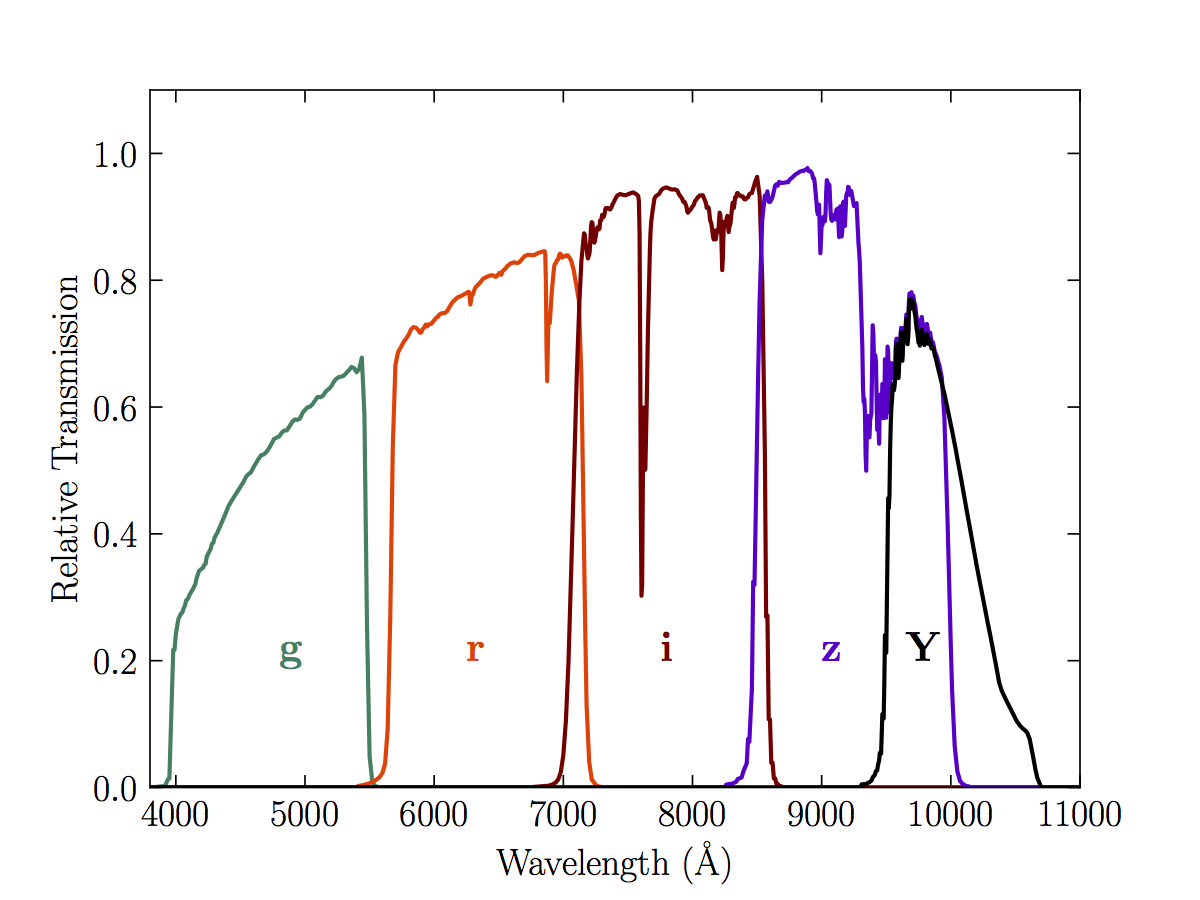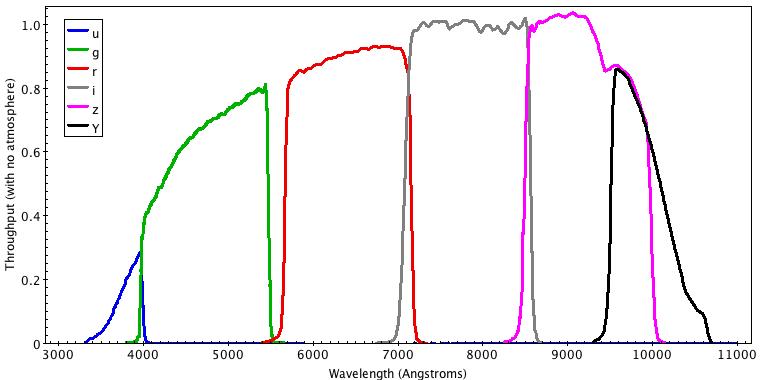


DES DR1 Standard Bandpasses for the DECam g, r, i, z and Y filters. The bandpasses represent the total system throughput, including atmospheric transmission (airmass = 1.2) and the average instrumental response across the science CCDs.

DECam filters ugrizY throughput (with no atmosphere)
Links
[1] https://www.darkenergysurvey.org/wp-content/uploads/2018/01/DR1Release.pdf
[2] http://www.ctio.noao.edu/noao/sites/default/files/DECam/STD_BANDPASSES_DR1.fits
[3] http://www.ctio.noao.edu/noao/sites/default/files/DECam/STD_BANDPASSES_DR1.dat
[4] http://www.ctio.noao.edu/noao/sites/default/files/DECam/README_DR1_filters.txt
[5] http://www.ctio.noao.edu/noao/sites/default/files/DECam/ufilter.dat
[6] http://www.ctio.noao.edu/noao/sites/default/files/DECam/DECam_filters_transmission.txt
[7] http://www.ctio.noao.edu/noao/sites/default/files/DECam/decam_filters_transmission.gif
[8] http://www.ctio.noao.edu/noao/content/DECam-VR-filter
[9] http://www.ctio.noao.edu/noao/content/Properties-N964-filter
[10] http://www.ctio.noao.edu/noao/content/Properties-N662-filter
[11] http://www.ctio.noao.edu/noao/sites/default/files/DECam/DECam_filters.xlsx
[12] http://www.ctio.noao.edu/noao/content/DECam-Frequently-Asked-Questions